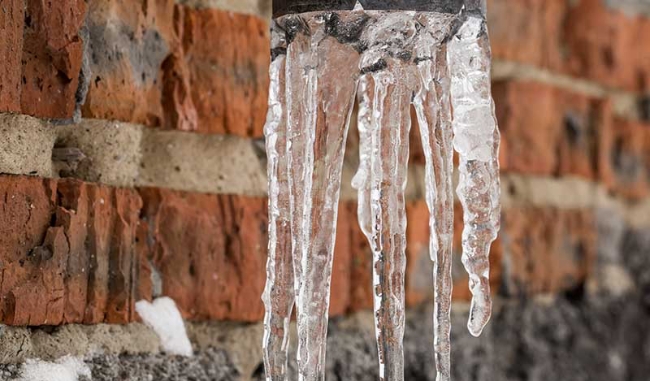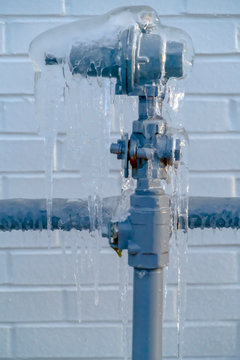Tips to Defend Pipes from Freezing: Professional Guidance
Tips to Defend Pipes from Freezing: Professional Guidance
Blog Article
The article below on the subject of Winter Plumbing Precautions: Preventing Frozen Pipes is definitely attention-grabbing. You should investigate for yourself.

Cold weather can wreak havoc on your pipes, specifically by freezing pipelines. Below's how to stop it from occurring and what to do if it does.
Introduction
As temperatures decline, the threat of frozen pipes increases, potentially resulting in expensive repair work and water damages. Understanding exactly how to prevent frozen pipelines is essential for home owners in cool climates.
Recognizing Frozen Pipes
What triggers pipes to freeze?
Pipelines freeze when revealed to temperatures below 32 ° F (0 ° C) for extended periods. As water inside the pipes freezes, it increases, putting pressure on the pipe walls and possibly triggering them to burst.
Threats and problems
Icy pipelines can lead to water interruptions, residential property damage, and pricey repair work. Ruptured pipelines can flood homes and cause considerable architectural damages.
Indicators of Frozen Pipes
Identifying frozen pipelines early can prevent them from rupturing.
How to recognize icy pipes
Look for lowered water circulation from faucets, uncommon smells or sounds from pipes, and noticeable frost on exposed pipes.
Avoidance Tips
Protecting prone pipelines
Wrap pipes in insulation sleeves or make use of heat tape to protect them from freezing temperature levels. Focus on pipes in unheated or outside areas of the home.
Heating methods
Keep interior rooms effectively warmed, especially locations with plumbing. Open cabinet doors to permit warm air to flow around pipelines under sinks.
Shielding Outdoor Pipes
Yard pipes and outdoor faucets
Disconnect and drain yard hose pipes prior to winter months. Mount frost-proof spigots or cover outside faucets with protected caps.
What to Do If Your Pipes Freeze
Immediate activities to take
If you think icy pipes, keep faucets open up to relieve pressure as the ice melts. Utilize a hairdryer or towels soaked in hot water to thaw pipes slowly.
Long-Term Solutions
Architectural modifications
Take into consideration rerouting pipes far from outside wall surfaces or unheated areas. Add additional insulation to attic rooms, basements, and crawl spaces.
Updating insulation
Buy premium insulation for pipes, attic rooms, and wall surfaces. Appropriate insulation assists keep regular temperatures and decreases the danger of icy pipes.
Verdict
Stopping frozen pipelines calls for aggressive measures and fast feedbacks. By understanding the causes, indicators, and preventive measures, homeowners can protect their plumbing during cold weather.
5 Ways to Prevent Frozen Pipes
Drain Outdoor Faucets and Disconnect Hoses
First, close the shut-off valve that controls the flow of water in the pipe to your outdoor faucet. Then, head outside to disconnect and drain your hose and open the outdoor faucet to allow the water to completely drain out of the line. Turn off the faucet when done. Finally, head back to the shut-off valve and drain the remaining water inside the pipe into a bucket or container. Additionally, if you have a home irrigation system, you should consider hiring an expert to clear the system of water each year.
Insulate Pipes
One of the best and most cost-effective methods for preventing frozen water pipes is to wrap your pipes with insulation. This is especially important for areas in your home that aren’t exposed to heat, such as an attic. We suggest using foam sleeves, which can typically be found at your local hardware store.
Keep Heat Running at 65
Your pipes are located inside your walls, and the temperature there is much colder than the rest of the house. To prevent your pipes from freezing, The Insurance Information Institute suggests that you keep your home heated to at least 65 degrees, even when traveling. You may want to invest in smart devices that can keep an eye on the temperature in your home while you’re away.
Leave Water Dripping
Moving water — even a small trickle — can prevent ice from forming inside your pipes. When freezing temps are imminent, start a drip of water from all faucets that serve exposed pipes. Leaving a few faucets running will also help relieve pressure inside the pipes and help prevent a rupture if the water inside freezes.
Open Cupboard Doors
Warm your kitchen and bathroom pipes by opening cupboards and vanities. You should also leave your interior doors ajar to help warm air circulate evenly throughout your home.

I ran across that piece of writing about How To Avoid Freezing Pipes when doing a lookup on the internet. Sharing is good. Helping people is fun. Thanks so much for taking the time to read it.
Call Today Report this page